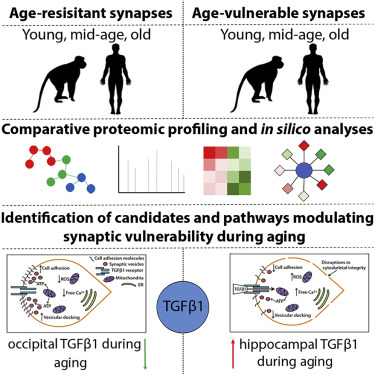
# How Human and Primate Brains Age Differently: An In-Depth Examination of Alzheimer’s Vulnerability
Alzheimer’s disease is a crippling neurodegenerative illness that primarily impacts humans, with over 50 million individuals experiencing this condition worldwide. Marked by significant cognitive deterioration, including memory impairment and disorientation, Alzheimer’s typically exacerbates with advancing age. However, a recent review featured in *Aging* offers captivating insights into how non-human primates, like chimpanzees, baboons, and macaques, exhibit only mild cognitive and behavioral changes as they age, representing a clear deviation from the human experience.
Crucially, this study illuminates the brain aging mechanisms in non-human primates, providing clues regarding their enhanced resistance to Alzheimer’s disease. Spearheaded by Dr. Ferrer Isidro from the University of Barcelona, the review enhances decades of comparative neuroscience and may open avenues for new therapeutic approaches aimed at decelerating or preventing the progression of Alzheimer’s in humans.
## Dissecting Alzheimer’s: A Comparison Between Humans and Non-Human Primates
### The Impact of Tau Tangles and Beta-Amyloid
In instances of Alzheimer’s among humans, the defining characteristics are beta-amyloid build-ups (sticky protein fragments that create plaques in the brain) and tau tangles (abnormal clusters of tau proteins within brain cells). These features accumulate over time, leading to the degeneration of brain cells and contributing to memory loss and cognitive decline.
While humans experience extensive and severe tau tangle development and beta-amyloid accumulation, non-human primates seldom encounter the same challenges. The review by Isidro points out that, although chimpanzees, baboons, and other primates can produce beta-amyloid plaques as they age, these deposits are far less harmful and do not initiate the destructive processes observed in human brains. Notably, when tau tangles appear in non-human primates, they remain confined and relatively harmless, leading only to mild cognitive and behavioral alterations.
### What Makes Human Brains More Prone to Damage?
The most remarkable divergence between humans and other primates lies in the propagation of tau tangles. In humans, tau tangles start developing early and swiftly spread across the brain, progressively damaging neurons and triggering a chain of negative repercussions. The widespread nature of Alzheimer’s pathology in our species prompts an examination of why evolution has rendered humans uniquely susceptible to this ailment.
## Evolutionary Factors Contributing to Alzheimer’s Vulnerability
### Larger Brains and Longer Lifespans: A Double-Edged Sword?
From an evolutionary standpoint, human brains stand out due to their size, complexity, and advanced cognitive abilities. The average human lifespan has significantly increased, attributable to advancements in healthcare, technology, and social structures. Nonetheless, these very characteristics that differentiate us—such as larger brain volume, prolonged lifespan, and enhanced cognitive capabilities for language, creativity, and reasoning—may also explain our heightened vulnerability to Alzheimer’s disease.
The elevated density of neural connections and continuous neuroplasticity in human brains likely renders us more susceptible to age-related protein misfolding and deposit formation. Moreover, the longer life spans that humans typically experience could provide detrimental proteins, like beta-amyloid and tau, with more time to build up, ultimately resulting in more extensive damage.
As per Isidro’s review, these evolutionary traits uniquely position us among primates, possibly elucidating why non-human primates appear relatively safeguarded from Alzheimer’s-related brain injury despite numerous genetic and physiological resemblances to humans.
## Questioning the Amyloid Cascade Hypothesis
The review also tackles a long-standing debate within Alzheimer’s research: What genuinely triggers the onset and advancement of the disease? Historically, the amyloid cascade hypothesis has dominated the discourse, suggesting that the buildup of beta-amyloid plaques is the principal catalyst for Alzheimer’s disease. However, this theory has faced multiple challenges, especially as therapies aimed at beta-amyloid have failed to deliver substantial clinical results in human trials.
Isidro’s findings contest this conventional perspective, shifting attention to tau tangles as the more pivotal factor driving Alzheimer’s disease. In non-human primates, the presence of beta-amyloid does not lead to the same series of harmful outcomes, indicating that preventing or reducing tau deposits may be essential for creating more effective treatments. This change in focus could ignite a new wave of research into tau-targeting therapies that completely bypass amyloid, presenting renewed optimism for delaying or alleviating the disease in humans.
## Implications for Alzheimer’s Research and Therapeutics
The resistance demonstrated by non-human primates to the detrimental effects of aging carries significant consequences for future Alzheimer’s research. While primates accumulate fewer and less toxic deposits of beta-amyloid and tau tangles, exploring their brains may assist scientists in uncovering the unique protective mechanisms at work. Grasping these mechanisms could transform our approach to Alzheimer’s therapy in humans.
“Human brain aging is distinct from brain aging in non-human primates.”